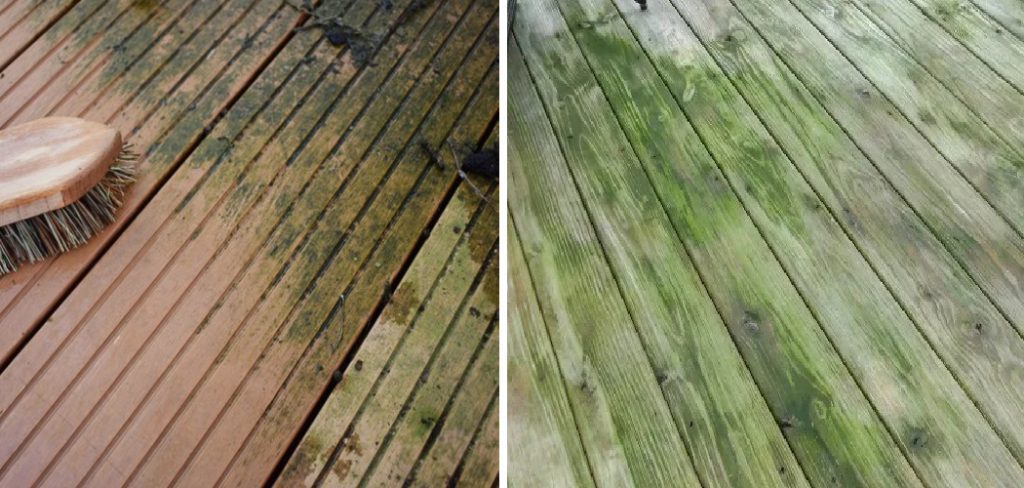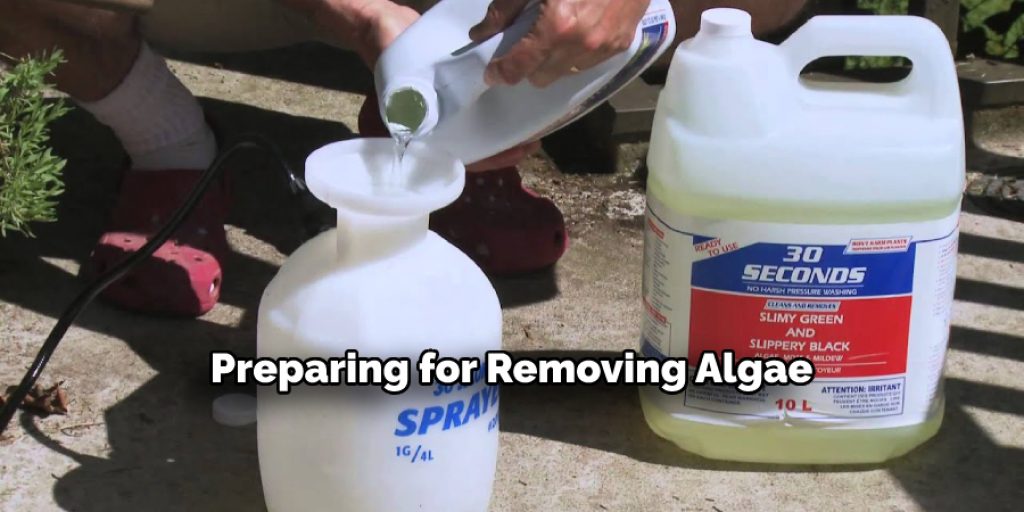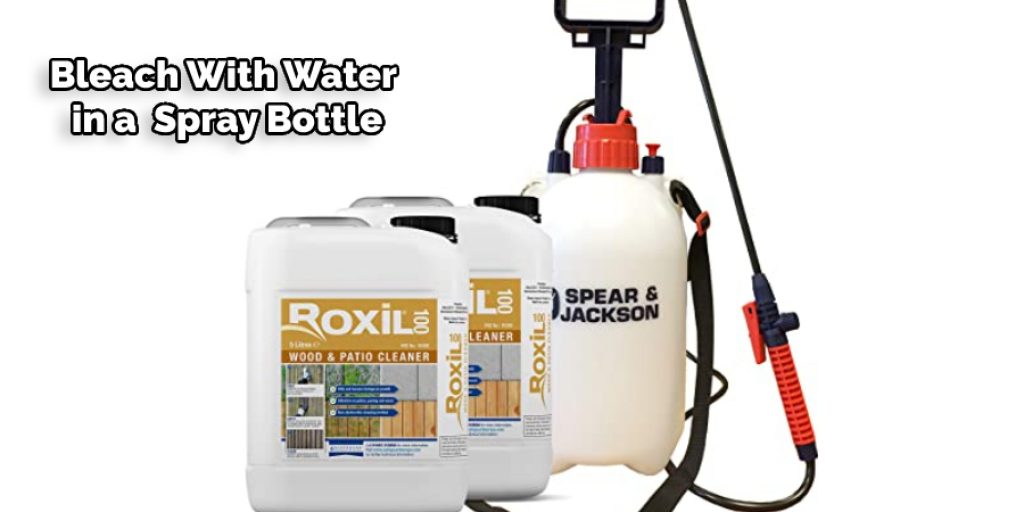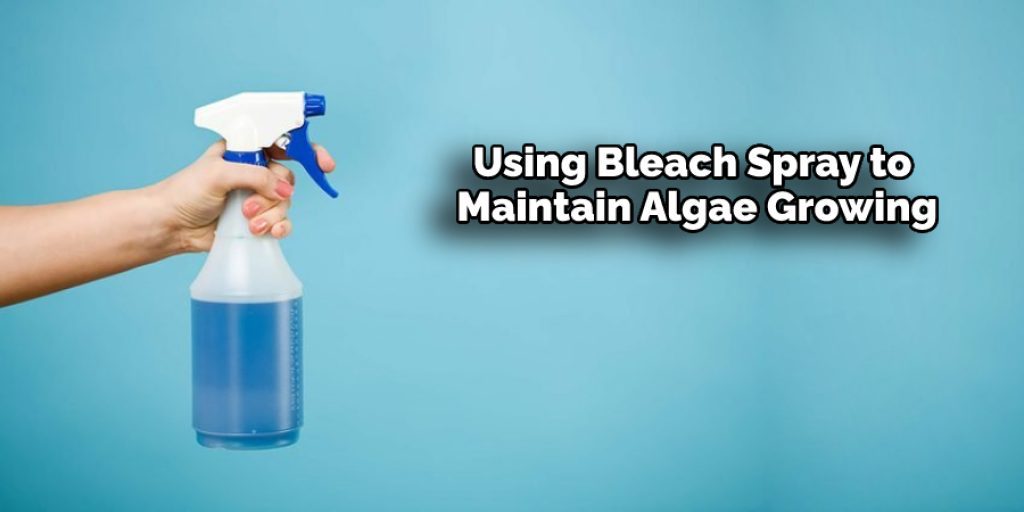Algae can be a pesky problem for homeowners, and decks are no exception. Algae is not only unsightly, but it also damages the deck’s surface. However, a few simple steps will prevent algae from growing on your decking. Algae can cause damage to any outdoor surface, including wood decks, concrete patios, retaining walls, and driveways.

The most common algae found in these environments is black brush algae, which grows best in moist shady areas with plenty of organic material such as mulch or leaves around. Brush up on how to stop this pest from taking over your backyard! First, you need to know how to stop algae growing on decking.
Step to Follow on How to Stop Algae Growing on Decking
Step One: Detect
Detection of a problem is a significant step. When you detect the algae growing on your decking, it can be due to many reasons, such as moisture, sun exposure, and lack of cleaning. It is good to hire a professional every year or two to clean your decking to avoid this.
This is an excellent preventative measure so you can avoid algae in the future, but also a wonderful time to inspect the decking and replace any planks that may be damaged.
Step Two: Prepare
Before you can stop algae growth on your decking, it’s essential to prepare. You will need some supplies, equipment, and tools that you may not already have. Some of the things you will need are chlorine bleach, a scrub brush or broom, gloves, safety goggles, and long-sleeved clothing.

Also, remember to put on some sunscreen to protect yourself from the harsh sun rays during the day. If your decking is enclosed, you will need to open it but be careful because the algae can spread to other areas of your home and yard if it is not contained.
Step Three: Kill the Algae
Now that you have prepared your supplies and equipment, it’s time to kill algae on your decking. First, clean off any dirt or debris with a broom or scrub brush. Afterward, mix chlorine bleach in warm water according to the product label instructions.
Then pour this mixture onto the algae-covered area of your decking. Be careful because this may damage surrounding plants and grass if it is not contained to just the algae or gets into those areas accidentally. You can then use a stiff brush to remove as much of the algae as possible from the deck boards, making the next step easier.
Step Four: Repel Against Growth
After you have killed the algae, you can repel against it growing back. To do this, mix one part bleach with nine parts of water in a bucket or spray bottle. Spray this mixture on your decking to keep the algae at bay.

If you want an extra barrier between your decking and any future growth, you can also mix one gallon of bleach with one gallon of water, pour it into a garden sprayer, and spray this mixture onto your deck. This may not be necessary but can offer another barrier to keep algae growth at bay.
Step Five: Prevent
To stop algae from growing on your decking and keep it away for good, you will need to prevent it by keeping the moisture, sun exposure, and debris off of your deck boards. To do this it is recommended that you rinse the deck with a mixture consisting of two tablespoons of bleach in one gallon of water after every rain or after washing it.
Also, you can prevent moisture by covering the deck with a tarp when not in use. If you leave it exposed, be sure to remove any wet leaves or dirt that may accumulate after each rain or windy day to preserve its condition. Debris is another thing that collects on decks and, if left alone, can grow algae. This will help in how to stop algae growing on decking.
Step Six: Maintain
To stop algae from growing on your decking and keep it away for good, you will need to maintain your deck on an ongoing basis. You can do this by periodically cleaning your deck with a mixture of chlorine bleach and water, rinsing it off after each rain or windy day, and removing any debris that may accumulate on the surface.

If you notice algae starting to grow again, you can treat it quickly by re-spraying your decking with cleaner or scrubbing it off with a solution of one part bleach to nine parts water. If you follow these steps properly, it should be very easy to stop algae from growing on your decking and keep it that way.
Step Seven: Enjoy
After you have killed the algae on your decking, cleaned it up, and made sure to discourage any future growth, there is nothing more for you to do. Now you can enjoy your beautiful deck without worrying about algae. You will probably only need the materials listed in step one to clean algae off of your deck boards.
The other materials are to prevent the growth in the first place and to maintain your deck. For more information on how to stop algae growing on your decking, please visit this site. Fungi and algae are very common in the summer when it is hot and humid out.
They grow especially fast when there is excessive moisture, dark or shady areas, and little air circulation. If you notice any fungi or algae growing on your decking, you can kill it with bleach. However, be careful because some types of wood may be damaged by bleach.
Frequently Asked Questions
Will Bleach Kill Algae on Decking?
Bleach can kill algae on decking, but it is not recommended. There are many ways to kill algae, and one of them is by using bleach. Bleach works best when the water temperature is below 80 degrees Fahrenheit, and the concentration of bleach used should be less than one tablespoon per gallon of water. This way, you will also prevent any harmful bacteria from growing in your tank or water system.
Can You Paint Over Algae on Decking?
Unfortunately, no. Algae can be difficult to remove from a surface that has been painted over with a different color, and it will continue to grow in the new paint coatings.
However, if you have algae growing on your deck or other surfaces, you can use a natural solution like vinegar as an algaecide and prevent further algae growth.
Does Vinegar Kill Algae on Decks?
Vinegar is an effective way to remove algae from your deck. However, you should use it sparingly because it can damage the wood of your deck.
Vinegar works so well on algae because it contains acetic acid, which has a high pH level. The lower the pH level, the more acidic the solution becomes, making it difficult for algae to survive in such conditions.
Can You Stain Over Algae?
Yes, you can stain over algae. Algae is a plant-like organism that needs light to grow, and it has no chlorophyll.
The color of the algae will change depending on the level of light it gets. You can stain over algae by using any paint or stains that you have at home like, water-based paints, oil-based paints, stains, and finishes.
How Often Should You Reseal Your Deck?
The frequency of re-sealing depends on the type of wood used in the deck. If you have a cedar deck, then it is recommended to seal it every year or two. If you have a composite deck, then it is recommended to seal it once every 2-3 years.
Conclusion
The best way to prevent algae from growing on your decking is to clean it regularly with a garden hose or pressure washer. If you have been using chemicals, they can break down the protective coating of the wood and make it more susceptible to mold growth.
Algae will not grow if there is no space for them – so keep surfaces clear of debris by sweeping up leaves and other material that accumulates in high-traffic areas like decks, walkways, patios, balconies, and sidewalks.
It’s also important to control moisture levels as much as possible, which means avoiding overwatering plants or lawns near your home. At this point, you should feel confident that you know how to stop algae growing on decking.
You may also like- How to Get Rid of Black Mold on Pool Deck








